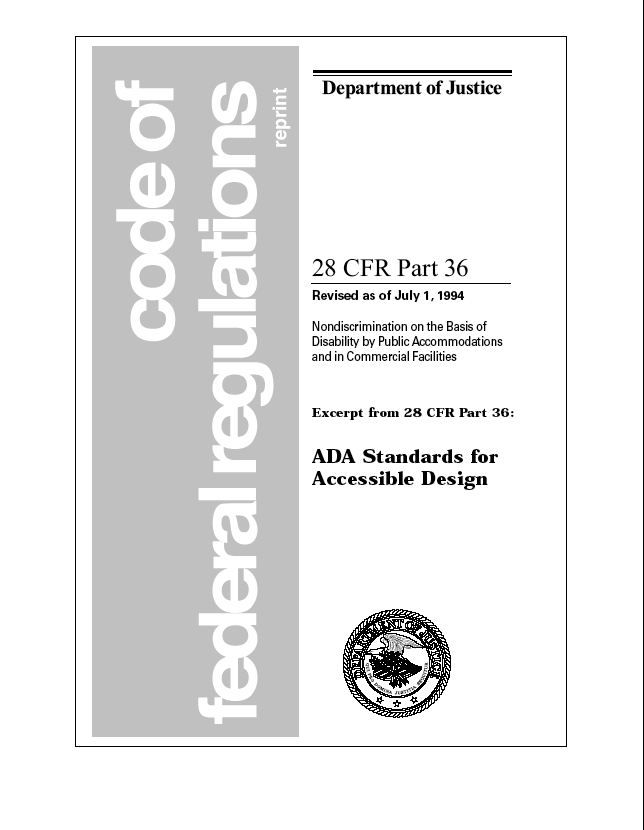In 1990 the United States Congress enacted the Americans with Disabilities Act (ADA), a far reaching legislation that prohibits discrimination against persons with disabilities. In addition to protecting the right to employment, the ADA ensures access to public transportation and full and equal opportunity to enjoy goods, services and use public accommodations. Consequently business establishments that serve the public are required by law to comply with a variety of requisites including some very specific guidelines for signage.
Most of us think immediately of braille signs, but the ADA requirements go far beyond signage for the blind. Signs must be readable to the functionally blind as well as those with lesser visual impairments. Persons in wheelchairs must also be able to access the information on signage. In addition, people who are deaf, have difficulty speaking due to physical disease or psychiatric illness, the elderly, and those with other impairments can all benefit greatly from clear ADA compliant signage.
Our Blog - A look into our world
Topics: architectural signage, ada, Americans With Disabilities Act signage
Topics: architectural signage, branding, wayfinding systems, indoor signs, wayfinding signs, Americans With Disabilities Act signage, HubSpot Tips
Understanding ADA - Americans With Disabilities Act signage
Posted by Gary Baron on Thu, Sep 22, 2011 @ 02:32 PM
Although ADA signs are required by law, they are no longer required to have a standardized, uniformed appearance. The font style, color, shape and the material the sign is created on can all be customized. Before modificati on can begin, understand and follow the requirements.
Topics: architectural signage, ada, office signs, indoor signs, Americans With Disabilities Act signage









